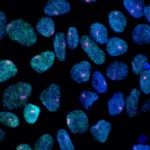About
The phenomenon of neurogenesis in adult animals, which has therapeutic potential in treating neurodegenerative diseases, leads to several questions: What controls the pattern of connections formed by new cells? How is the stability of memory and of information processing maintained when cells and synapses are constantly being lost and new ones produced?To answer these questions we intend to investigate neurogenesis in the mammalian olfactory bulb, using a combination of computational modeling and electrophysiology. We propose to develop a detailed, biologically-realistic computational model of the olfactory bulb neuronal network, incorporating recent findings about neuronal membrane and synaptic properties, and obtaining new experimental data as necessary to constrain the model. Using this model we will investigate odor information processing, learning and memory in the olfactory bulb, and how these are affected by neurogenesis. Use of a computational model will allow us to quickly perform simulation experiments to investigate alternative hypotheses. The most promising simulation results will be tested by experimental methods: patch-clamp electrophysiology in mouse olfactory bulb slices, and possibly behavioral methods.






















